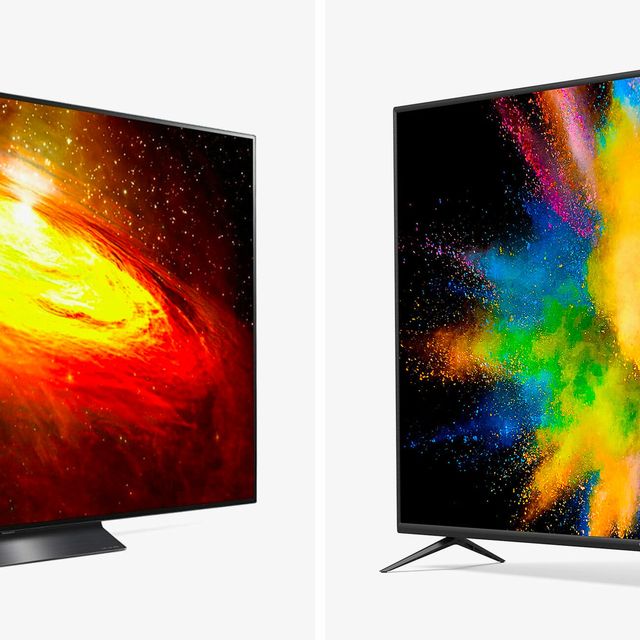Let’s say you’re in the market for the new TV, and you’re finally looking to make the jump to 4K. When you’re shopping around, you come across a puzzling situation: two brand new TVs, identical in size, but with two very different prices. One costs $500 while the other $2,000. What’s the deal? What does that extra money actually buy you, and do you need it?
There’s more to picture quality than mere resolution.
If you have two 4Ks that are the same size and were made in the same year, but one costs significantly more than the other, it boils down to picture quality and specifically the technology being used to put the colors on the screen. All 4K TVs have the same number of pixels (3840 x 2160), but the difference in picture quality comes from how they are lit. The best 4K displays are the ones that have the most control over each individual pixel, to light them up in different colors or even turn them off completely without affecting adjacent pixels of a different color. That’s where display technologies come in, and when it comes to 4K TVs, you’re either talking about LCD or OLED.
Above you’ll see two 4K TVs that are the same size (55-inches) and from the same year (2019), but at very different prices. The Vizio M-Series Quantum, which is one of the best affordable 4K TVs, costs less than $500. The LG B Series, one of the nicer OLED TVs, is over $1,000 more expensive.
Pricier OLED displays mean better colors, sharper contrast, and blacker blacks.
The lesser of the two displays is the LCD (liquid crystal display). LCD TVs control the brightness of their picture with an LED backlight that covers a lot more space than a single pixel. Instead, they control groups or clusters of pixels that are known as dimming zones. The more dimming zones an LCD TV has, the more control it has over the pixels and the better picture it’s going to be able to produce.
The ultimate dimming zone, however, is a single pixel, and that is what an OLED TV delivers. Each pixel on an OLED screen is its own backlight. The result is that OLED TVs are able to get brighter and darker while in close proximity to each other, which generates much better contrast. Additionally, OLED TVs are generally able to be thinner and lighter than LCD TVs because they don’t require an extra panel of back-lighting. The problem is OLED is a newer technology and it will be responsible for the bulk of the price differential between two otherwise identical-looking TVs. One of LG’s 65-inch entry-level 4K OLED TVs costs $2,300, for example, while one of the company’s 65-inch 4K LCD TVs costs $650.
Brighter brightness, higher refresh rates, HDR and more dimming zones also add to image quality (and price).
It’s not just OLED or LCD though. More expensive LCD TVs will shore up their display technology weakness with other technologies, like a brighter backlight, or a larger number of smaller dimming zones. More expensive TVs will often also boast a higher refresh rate, the number of times per second that the screen updates what it is showing. Higher rates mean a higher price, but less motion blur. Higher-end TVs are also more likely to support high dynamic range (HDR) technologies, such as Dolby Vision and HDR10, which help create deeper blacks and more vivid colors on any display.
A TV is more than just its display. Materials and speakers are a cost factor too.
A lot of times the difference between a company’s entry-level 4K TVs and mid-range 4K TV, by the likes of TCL or Vizio, is the fact that the frame of the TVs is made of plastic instead of metal. Not only does a plastic frame not look as nice, but it’s also more susceptible to bumps and scratches whenever you happen to move it.
And while you’ll basically always be better off using a soundbar instead of your TV’s built-in speakers, some of the more expensive TVs might have slightly bigger speakers that get slightly louder, have better sound separation and might even support surround sound technologies, like Dolby Atmos or DTS:X. But many TV manufacturers (such as TCL, Sony, Vizio, Samsung and LG) actually want you to buy a separate soundbar or speaker system because they make those as well. And for our money, that’s a good choice.
Note: Purchasing products through our links may earn us a portion of the sale, which supports our editorial team’s mission. Learn more here.


















